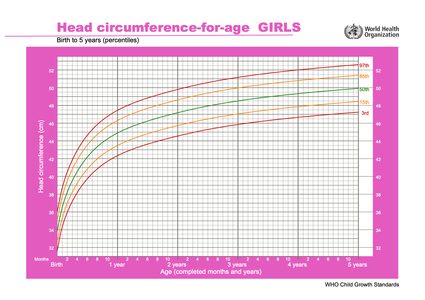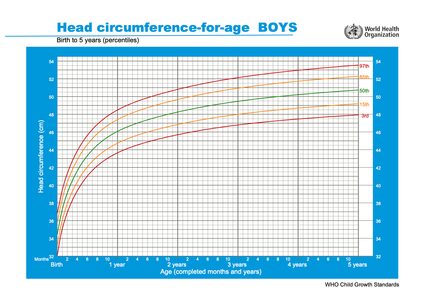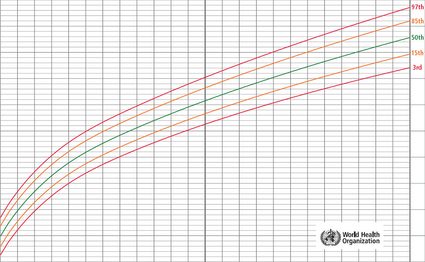Head Circumference Percentile Calculator
If you're interested in your child's growth, this head circumference percentile calculator will give you insight into your baby's development (for information immediately post-birth, check out the APGAR score calculator).
Take a look and see where your newborn's head circumference places amongst their peers. In the article below, we explain how to measure head circumference correctly, what child growth charts are, and how to interpret the results.
We try our best to make our Omni Calculators as precise and reliable as possible. However, this tool can never replace a professional doctor's assessment. If any health condition bothers you, consult a physician.
Why do we check a newborn head circumference?
A child's head circumference reflects the growth of their brain, and is therefore an indicator of the baby's development. The skull is the largest part of their body, with the average newborn’s head circumference measuring about 13.75 inches, or 35 cm if you prefer the metric system.
By the time a human is one month old, their head has grown to about 15 inches (38 cm). It has been observed that boys tend to be slightly taller than girls, but interestingly, the difference in newborn head circumference between sexes tends to be only around half an inch (1 cm). The height percentile calculator helps to assess differences between sexes in children.
How to measure head circumference
There are some rules to measuring the size of a baby's head:
- First of all, use a non-stretchable tape measure (most often a flexible metal or plastic). A piece of string will also do!
- Wrap the tape from the most prominent part of the forehead - one finger above the eyebrows - then above the ears, and finally around the widest part of the back of the skull. Remember not to pull too tight. It should cover all the widest parts of the head, where the slope is most pronounced.
- Remeasure - it is best to repeat the measurement three times.
Take the largest number and put this into the child growth calculator. Don't forget to select your baby's age and sex, and in the blink of an eye, you'll get an exact percentile your baby fits into, along with with a graphic explaining where exactly your baby places.


How should I interpret the child growth calculator results?
Once you input all the information needed for the calculation, you'll see some numbers. These are your results. First - the exact percentile result. Just below that is the range in which the results are placed, e.g. between the 15th and 50th percentile. The numbers themselves are not crucial.
Doctors consider the rate of growth as an important factor when looking at the child growth chart:
- The child should follow the same percentile line on the chart as they grow.
- If the results cross two or more percentile lines (or they raise/decrease by at least two ranges), e.g. from 75th-85th to 15th-25th, you should consult a doctor.
- If the head circumference is below the 5th or above the 95th percentile, check if the baby has always been in those ranges. In your child has only entered these ranges recently, consult a doctor.
Keep in mind that this tool can be only used if the children is less than 5 years old. Our data derives from WHO (World Health Organization), and the standards were developed using data collected by the WHO Multicentre Growth Reference Study, which only had data for kids up to that age. After that age, BMI growth charts become more indicative of a child's development, which depend on height and weight.

Head circumference percentile calculator in practice
To help you better understand how exactly this head circumference percentile calculator works, we have prepared an example. Our friend Stan has a daughter, the four months old Sophie. She was born perfectly on time, 40+0 week, and scored 9 out of 10 in the APGAR test. However, her head circumference has always bothered Stan, as she's been in the 25th percentile since she was born.
Now, her head size is 39.8 cm; as mentioned, she is four months old and (obviously) a girl. So, she is in the 27.78 percentile exactly. What matters here is that she stays between the 25-50 percentiles. The pediatrician would say that as long as she follows the same percentile line and doesn't experience a significant shift, she's developing correctly.
Why do we use child growth charts?
This growth chart calculator gives you your results in percentiles. It is meant to compare your child's height, weight, BMI (estimated with BMI percentile calculator), and head size with that of their peers (of exactly the same age). They were developed using data from thousands of children, with their growth after monitored. Now the data serves as an early indicator of a medical problem.
Each line (or percentile) on the growth chart shows how many children statistically have an exact head size at a specific age. As an example, the head circumference on the 25th percentile indicates that 75% of the children in the US (of that age) have a larger head than that. Subsequently, one-fourth of the kids from the United States have a smaller head circumference than the given number.
Parents and pediatricians all over the world eagerly use percentile and child growth charts to follow children's development.